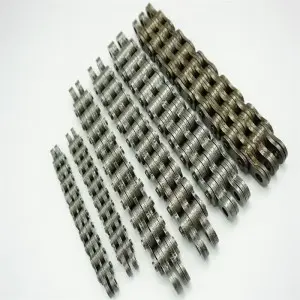In agriculture, value chains play a vital role in connecting farmers and consumers. Knowing what a value chain is can provide valuable insights into how produce gets from farm to fork. This blog will shed light on the concept of the agricultural value chain and demonstrate its significance in unlocking the potential of the sector.
What is an agricultural value chain?
Value chain refers to the whole process of agricultural products from production to consumption. It covers all activities and actors involved in the agricultural sector, including input suppliers, farmers, processors, distributors, retailers and consumers. This interconnected system is designed to optimize the value of agricultural products from start to finish.
Components of the value chain
1. Input Supplier:
These individuals or companies provide farmers with essential agricultural inputs such as seeds, fertilizers, pesticides, and machinery. Input suppliers play a key role in ensuring farmers receive quality inputs, which can increase productivity and ultimately increase the value of the final product.
2. Farmers:
Primary producers in the value chain are farmers. They grow their crops or raise their livestock following sustainable practices to ensure optimal yields. Farmers make a significant contribution to the value chain by producing high-quality agricultural products.
3. Processor:
Once the produce is harvested, it is handed over to processors who transform the raw produce into value-added products. Examples include grinding wheat into flour, pressing oilseeds for oil, or canning fruits and vegetables. Processors add value by improving the quality and extending the shelf life of raw materials.
4. Distributors:
Distributors play a vital role in the value chain by transporting and delivering agricultural products from processors to retailers or wholesalers. They ensure that products reach the market efficiently and in ideal condition. Typically, distributors operate within regional or national networks to simplify the movement of goods.
5. Retailer:
Retailers are the last step in the value chain before reaching consumers. They sell agricultural products through physical stores or online platforms, providing consumers with a variety of choices. Retailers bridge the gap between producers and consumers, making agricultural products easily accessible to the masses.
Create value through the value chain
Agricultural value chains create value through various mechanisms:
1. Quality control:
Every actor in the value chain adds value by ensuring that agricultural products meet quality standards. This includes maintaining optimal growing conditions, implementing proper storage techniques, and employing efficient processing methods. By prioritizing quality, value chains increase the marketability of agricultural products.
2. Traceability:
A well-established value chain enables traceability. This means the origin and journey of produce can be traced back to the farmer. Traceability enhances consumer confidence as they are assured of safe and sustainable farming practices, thereby contributing to increased demand and ultimately greater value creation.
3. Market access:
Value chains provide farmers with better access to markets, linking them to a wider group of consumers. This provides opportunities for small-scale farmers to enter national and even international markets, resulting in increased sales and higher profits. Improved market access can also boost economic growth in rural areas and reduce poverty levels.
Understanding the concept of the agricultural value chain is crucial for farmers, consumers and all participants in the industry. It highlights the interdependence among various stakeholders and emphasizes the importance of collaboration to unlock the inherent potential of the agricultural industry. By optimizing the value chain, we can promote sustainable agricultural practices, enhance food security and meet the growing global demand for nutritious food.
Post time: Aug-16-2023

